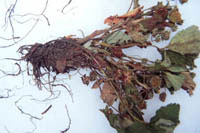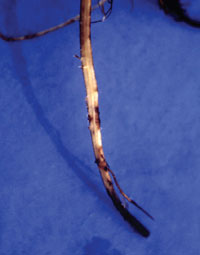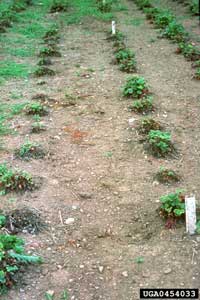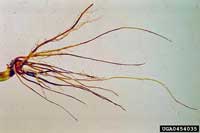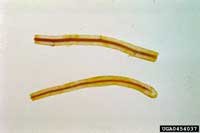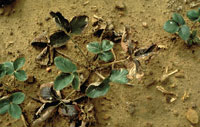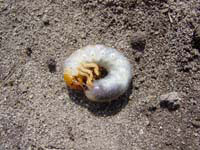Extension > Garden > Diagnose a problem > What's wrong with my plant? > Fruit > Strawberry > Wilted plant
Strawberries > Whole Plant > Wilted plant
1 of 4
Black Root Rot
Rhizoctonia sp. Pythium sp. and Fusarium sp.
- After first year, plants in a field showing reduced vigor, often in low or wet spots or in areas where the soil is compacted
- Roots appear ‘rat tailed’ and do not have fine fibrous root hairs
- Irregular black patches occur along the length of the fleshy white roots
- Interior of infected older woody roots turns black
- Common in areas where strawberries have been grown for many years
- More information on Black Root Rot
2 of 4
Red Stele
Phytophthora fragariae
- Plants start wilting and dying in the lower portions of the strawberry planting
- Roots appear ‘rat tailed’ and do not have fine fibrous root hairs
- Root tips are soft, discolored and rotten
- If the white root above the rotten tip is cut lengthwise, the root core (or stele) will appear to be dark red
- Common and most destructive in heavy clay soils or low wet areas
- Favored by cool, wet spring weather
- More information on Red Stele
3 of 4
Verticillium Wilt
Verticillium albo-atrum or V. dahliae
- Outer and older leaves droop, wilt, turn dry and become reddish-yellow or dark brown at the margins and between veins
- In severe infestations rapid plant death can occur
- Severely infected plants may appear stunted and flattened, with small yellowish leaves.
- Brownish to blue-black streaks or blotches may appear on the runners or petioles
- More prevalent in cool, overcast weather interspersed with warm, bright days
- More information on Verticillium Wilt
4 of 4
White Grubs
Phyllophaga spp.
- Plant is stunted, will wilt, and eventually dies
- Grubs feed on roots throughout the summer months
- Grubs have a white body color, brown head capsule, and c-shaped body
- Occurs in plantings that were previously grassy
- Adults do not feed on strawberries
- More information on White Grubs



